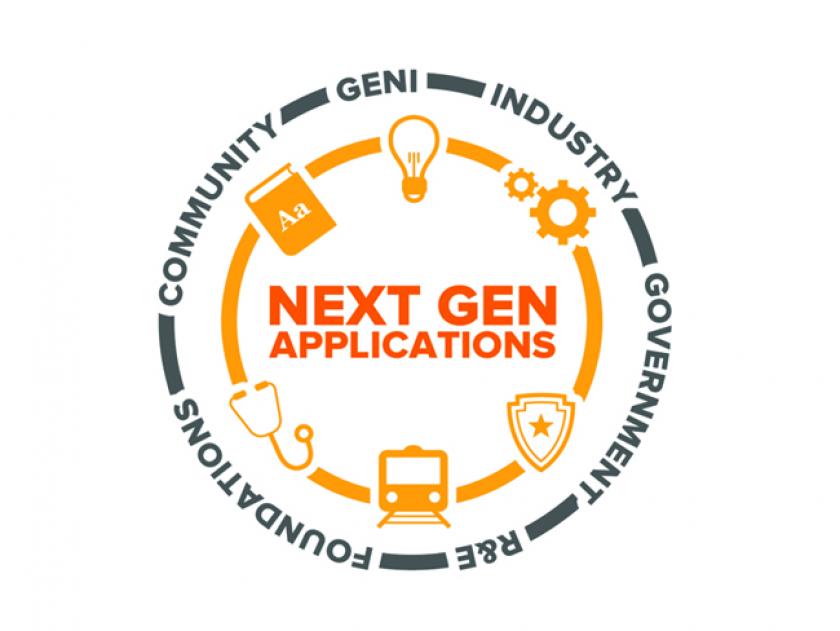
Gant leads campus effort around US Ignite and development of next-generation applications
Illinois is a campus with a long history of innovation in computing, from the first graphical web browser to Blue Waters, one of the world’s most powerful supercomputers. A new partnership with US Ignite, a national effort to foster the creation of transformative next-generation Internet applications, continues this tradition of creative thinking and bold application of technology.
Jon Gant, research associate professor at GSLIS, is leading the campus effort around US Ignite, bringing faculty from many departments together to brainstorm ideas, find areas for research collaboration, and to create a plan to bring new applications to fruition.
The Urbana Champaign Big Broadband (UC2B) project, of which Gant is a director, is a founding partner of US Ignite and will serve as a test bed for these newly developed applications.
In August, US Ignite staff members Joe Kochan, Nicole Levine, and Jessica Roeder visited campus and were able to tour campus resources such as NCSA and Blue Waters, meet with local government officials, and attend meetings with Chancellor Phyllis Wise and interested faculty.
 While on campus, Kochan praised Illinois for its comprehensive and coordinated efforts, and complimented the achievements of UC2B. When UC2B was conceived, it was not only meant to bring high-speed broadband to individuals’ homes but also to connect the community anchor institutions with residents and each other to improve the services provided. To that end, over 50 community groups including schools, hospitals, police and fire departments, and social service agencies have been connected to the network, which already includes 1,200 households and over 40 businesses in Champaign-Urbana. UC2B was recently named the National Association of Telecommunications Officers and Advisors (NATOA) 2012 Community Broadband Project of the Year.
While on campus, Kochan praised Illinois for its comprehensive and coordinated efforts, and complimented the achievements of UC2B. When UC2B was conceived, it was not only meant to bring high-speed broadband to individuals’ homes but also to connect the community anchor institutions with residents and each other to improve the services provided. To that end, over 50 community groups including schools, hospitals, police and fire departments, and social service agencies have been connected to the network, which already includes 1,200 households and over 40 businesses in Champaign-Urbana. UC2B was recently named the National Association of Telecommunications Officers and Advisors (NATOA) 2012 Community Broadband Project of the Year.
These efforts create a rich environment well-suited to serve as a test bed for US Ignite applications, where innovation can interact with end users, and where new applications in areas such as healthcare, education, and workforce development and training can be launched and tested.
Ultra-high speed networks such as UC2B will be key to creating the applications that can transform people’s lives. Kochan said, “We want the United States to be the place where the next generation Internet is created. We want to create an immersive digital experience. But to only talk in bits and bytes doesn’t capture it all. You really have to talk about applications. So how do we get application developers thinking without having to deal with compressing things to accommodate for low bandwidth? Open bandwith and let them imagine.”
The August meeting included faculty from across disciplines who are hopeful about tapping into US Ignite with projects in a number of areas:
- equipping public computing centers
- improving spatial modeling
- allowing architects to use digital ideation sketching and collaboration tools
- designing architectural spaces to bring people together in physical structures
- building telemedicine clinics
- creating visualization applications
- exploring digital humanities
- providing distance education through UI Extension
- reducing latency across networks to allow for artistic collaboration and sharing across the Internet
- and creating an advanced research network environment
“With the energy surrounding UC2B, Urbana-Champaign joins a handful of communities that are building the fastest network in the country with fiber-optic Internet connections to the home, school, library and community anchor institutions. This opens the front door of the technological frontier to not only imagine the future of the Internet, but also sets the stage for the University of Illinois to lead our nation in building applications and services that will redefine the future of our digital lives and meet the information needs of our society,” said Gant.